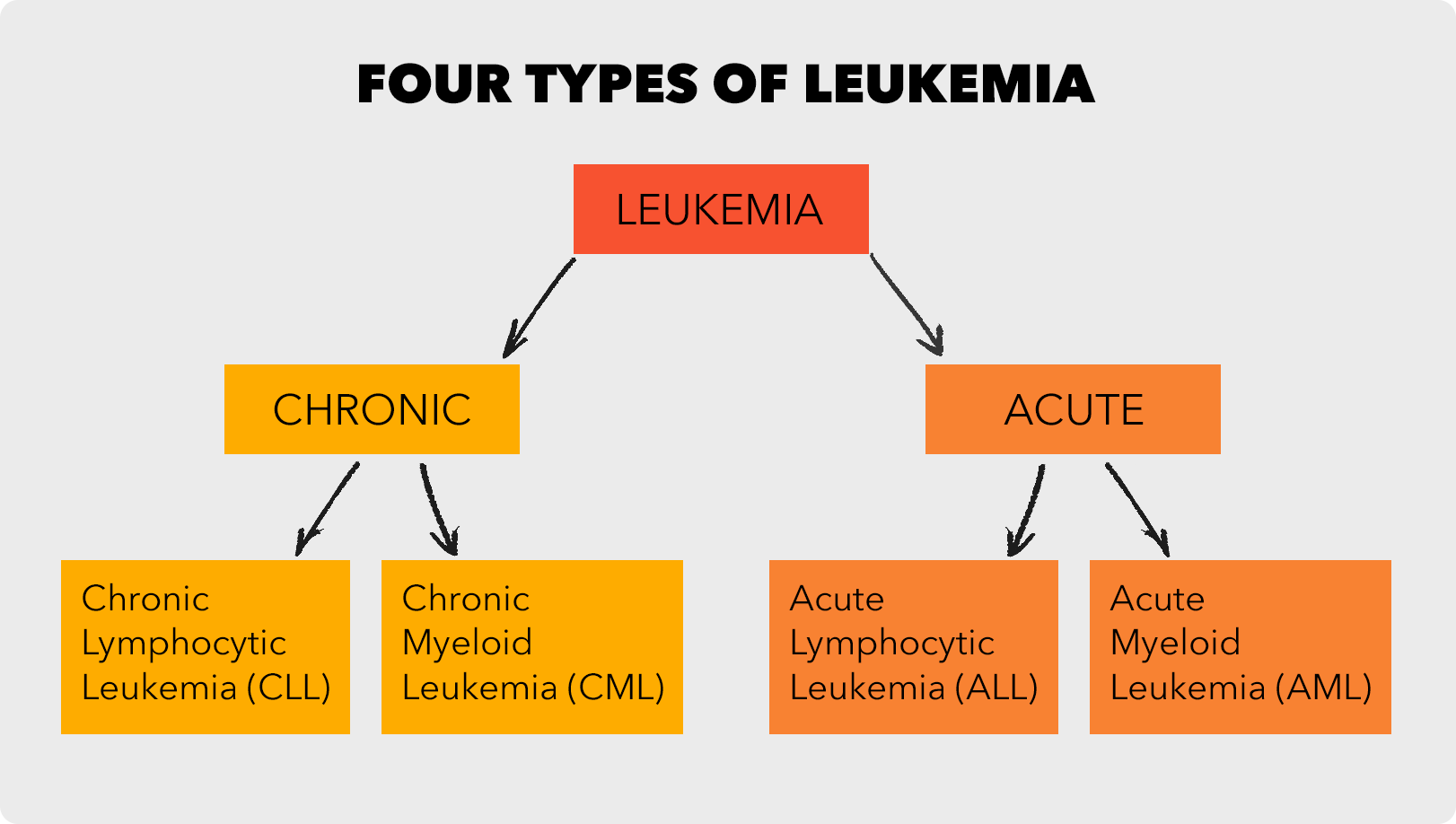Different Types of Leukemia
Leukemia is divided into many types based on its growth rate, affected cell type, the people it affects, and leukemia treatment. Based on the progress, Leukemia is categorized as acute, chronic, or chronic Leukemia.
The different types of Leukemia areas are listed below:
1. Acute lymphocytic Leukemia (ALL)
It is the most common type that is most present in children. It is related to early versions of lymphocytes, i.e., a type of white blood cell.
2. Acute Myeloid Leukemia (AML)
It is the most common type of Leukemia and affects adults. Acute myeloid Leukemia develops in the early versions of any blood cells, further affecting the bone marrow. As per recent research, about 31% of AML leukemia patients in the US annually.
3. Chronic lymphocytic leukemia (CLL)
Chronic lymphocytic leukemia is a fast-growing cancer of early forms of lymphocytes. It is one of the most common and deep-rooted adult leukemia.
4. Chronic myelomonocytic leukemia (CMML)
Mainly seen in older adults, and is characterized by immoderation of monocytes, i.e., a type of white blood cells.
The two major types of Leukemia:
- Acute leukemia (fast-growing cancer that spreads all over the body).
- Chronic lymphocytic Leukemia (slow-spreading leukemia).
Different stages are identified through the two systematic staging methods, i.e., the Rai and Binet systems.
Symptoms of Leukemia
Symptoms might differ for each type of Leukemia. However, a few common symptoms are as listed below:
- Excessive sweating
- Fatigue
- Tender bones
- High fever
- Bumps under the skin, which is usually an enlargement of lymph nodes
- Nose Bleeding
- Severe infections
- The appearance of red spots
- Frequent bleeding or bruises
- Extreme weight loss
Causes of Leukemia
While there is no definite reason that causes Leukemia, DNA changes such as exposure to cancer-causing chemicals and radiation are said to be responsible for the same. Many risk factors are involved and can be detected during a routine blood test.
The risk factors include the following:
- Smoking
- Cancer treatment
- Genetic disorder
- Viral infection
- Family history of Leukemia
Blood Cancer or Leukemia Treatment
The treatment depends on various factors, including the patient’s type, age, and medical history. A team of healthcare specialists, including hematologists and radiation oncologists, will diagnose the issue and suggest the most accurate treatment. The leukemia treatment options might include the following:
- Chemotherapy
- Bone marrow/stem cell transplant
- Biological therapy
- Radiation therapy
- Targeted therapy
Post the treatment, the patient will need follow-ups and other care routines, including blood tests, physical examination, bone marrow tests, and other tests to evaluate risk factors and side effects (if any) of the cancer treatment.
According to the National Cancer Institute (NCI), the 5-year relative survival rate for all types of Leukemia is about 65 percent. Patients are advised to look for the best healthcare experts around the globe to ensure dedicated and premium healthcare services.
Get in touch with a global healthcare platform that can educate its users with relevant information. They have experts who can facilitate you with multiple healthcare services to upgrade your health and wellbeing. With the extensive database of healthcare services, globally recognized professionals, high-end medical treatments, and world-class facilities, you can access optimal health and wellbeing and dedicated medical professionals at your service.

